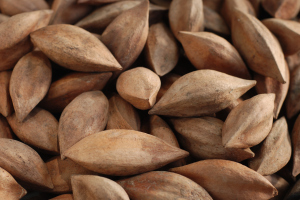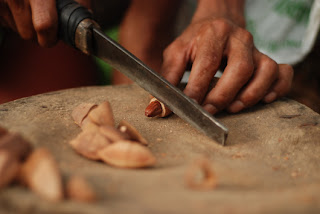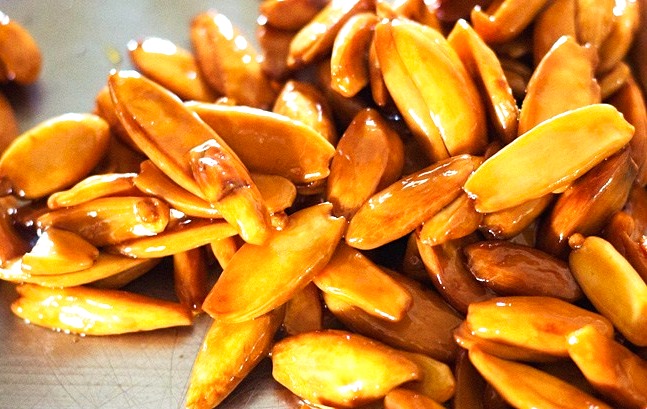
When we went to Bicol Region with my friends, there were lots of pili nut products that are sold to passengers on bus or in almost all bus stops. I was curious at first what this kind of sweetened nut that is a bit long in shape and caramelized with sugar. My friend told me that was a pili nut which is well known in Bicol Region.
Bicol is somewhere in the South of Luzon and it’s the region number 5 of the Philippine Island. If you are a bicolano, Pili is very familiar to you.
Well, what is really a pili nut?
As you can see in the figure above, Pili nut is also called Canarium Ovatum. The fruit is enclosed in a hard shell which, when ripe, has a thick, dark skin. Although it was used mainly as a garden plant, until it was made as special ingredients into many different sweet food products and even in cakes. Aside from this its health benefits were known to natives of the Philippines.
What are the active ingredients of Pili Nut?
The pili nut contains all eight essential amino acids. It contains 302 mg of magnesium which is more magnesium than any other nut. The U.S. Department of Agriculture-recommended amount for men is 400 to 420 mg daily and for women it is 310 to 320 mg daily. The pili nut also contains 100 percent of the daily recommended amount of copper and manganese. It also has a complete protein content, vital electrolytes, essential fats and is rich in minerals, which are important ingredients in maintaining bone and muscle tissue, a healthy heart, and keeping your body functioning at its best.
Read: Pili Nuts: Why This Delicious Philippine Superfood Can’t Crack the Health Food Market
What is the secret in cooking this nut and make the husk soft?
Don’t you know that the Pili nut’s husk is also edible and Bicolanos like this by dipping the husk in sugar. But they said, cooking the husk is not that easy if you don’t know what is the procedure. Well, according to them, in a pot put just right amount of water and estimate it so that if you will drop all pili nuts on the pot they are completely submerged.
Now heating the pot with water just until it becomes luke warm (Don’t overheat the water, else the pili husk will become more hard). Remove the pot from fire and drop all pili nuts into the pot and wait until their husk becomes soft and ready to eat.

The picture above shows the shell of the pili nut once you removed already the husk. They are hard and made like a shaped part of a furniture, but inside of it is the pili nut.

The photo above shows how Bicolanos manually remove the pili shell. They would use a bolo and the end tip of the bolo must touch the chopping board so that only the right amount of force is applied to the shell to break them. If you fail, the pili nut will be cutted into halves and it would not look perfect for commercial use.
As you can see in the picture below, this is the finished product of fried pili nuts with coated brown sugar. So sweet and delicious, perfect for snacks. Check out this recipe, how to make Coco Jam with Pili Nuts.

Looking for other Lutong Bahay Recipes to try on? Feel free to check out our ulam recipes, desserts recipes and snacks recipes.
Some visual and written contents are copyrighted to their respective and considerate owners. We do not claim that these recipes or photos are proprietary to us. If this is yours and you would like it to be removed and not shared with others, please let us know by sending an email to contact @ lutongbahayrecipe.com, you may use our website contact form or by sending a message on our Facebook page. Read our disclaimer.

Leave a Reply